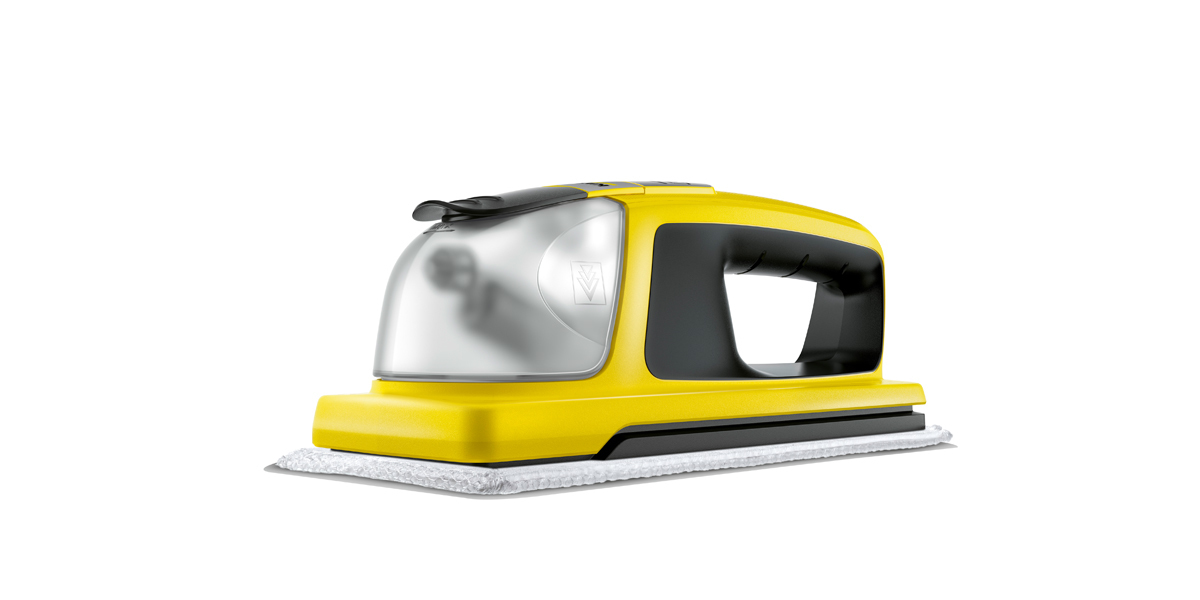Cleaning windows: Tips for a streak-free view
Cleaning windows is one of the most unpopular household chores. It requires manual work, takes time, and the result is rarely satisfactory since there are often streaks left on the windows. Use these tips to clean the windows quickly and with no streaks.
How often should you clean your windows?
Large windows, and large numbers of them, flood a home with light and make it feel inviting. However, particularly when the pollen count is high, following bad weather with lots of rain, and if there are extended dry periods with lots of dust, it takes just a few days before the windows look like they have not been cleaned in months. On the inside, windows also have a lot to contend with; children and pets in particular often leave behind prints and blotches on the window pane. Depending on how dirty they are, windows should therefore be cleaned, both inside and outside, approximately every two months.
Tip 1: Choose the right time
You should never clean windows when the sun is shining directly on them or on hot days. This is because the glass will dry too quickly and streaks will appear. A grey, but dry, day is therefore the most suitable time to clean your windows.
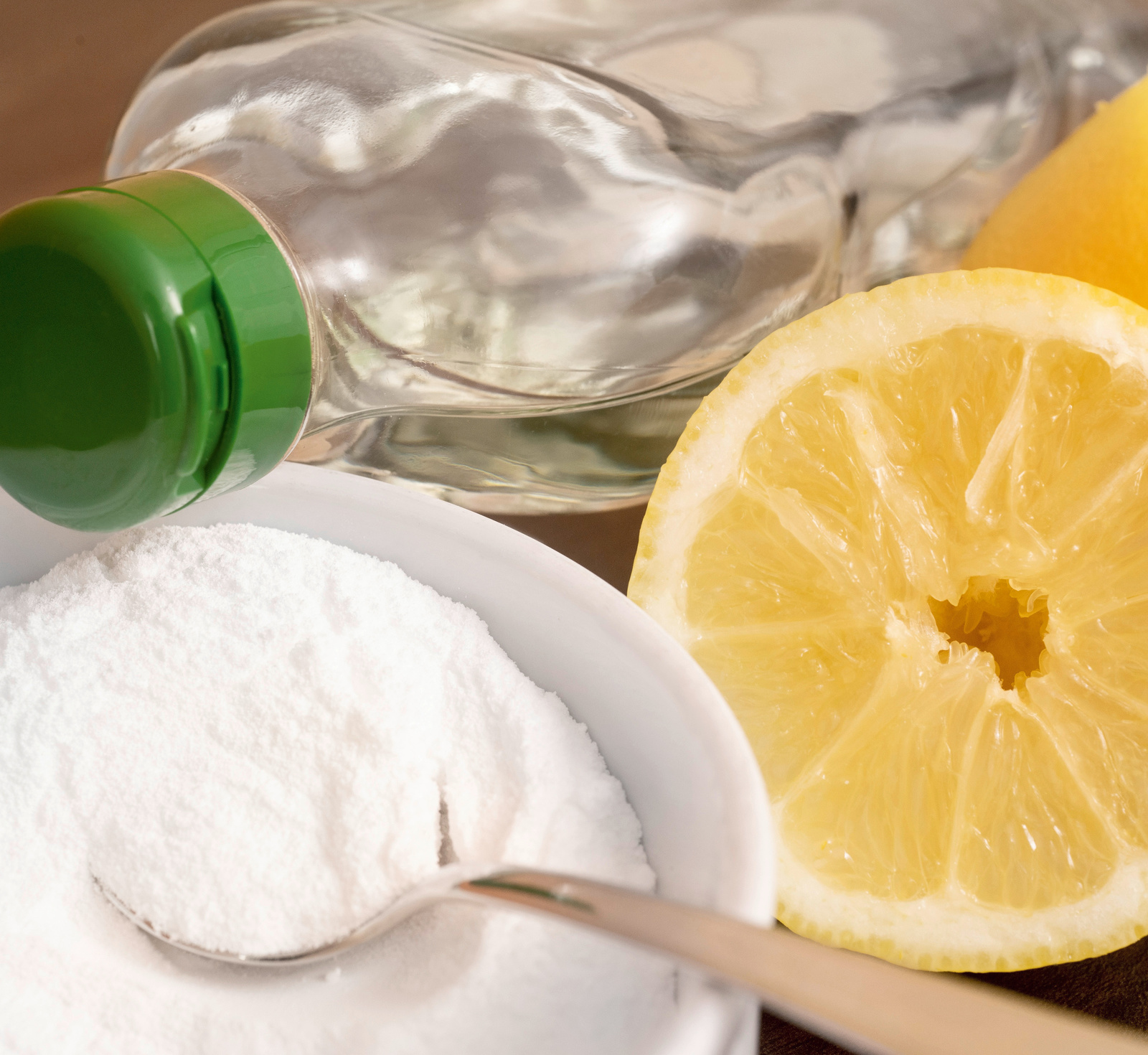
Cleaning windows with water and household remedies
A lot of dirt on the window panes and on the window frame can also be removed well using clean water. To do this, simply wipe the glass surfaces and the frame with a wet microfibre cloth or a lint-free cotton cloth and then dry them. If stubborn dirt has formed over several weeks, you should also use household remedies or cleaners. These are the best household remedies for cleaning windows:
- Vinegar or vinegar essence: Add 1 cup of vinegar essence to 1 litre of water. Then use this to clean the windows as usual. Note: You must cover stone window sills – for example, marble – before this because, otherwise, the vinegar essence may damage the surface.
- Citric acid: Add 2 to 3 tablespoons of citric acid powder to 1 litre of water and then use this to clean everything with a microfibre cloth.
- Washing-up liquid: You can also achieve great results using a mixture of lukewarm water and a squirt of a washing-up liquid that does not contain balsam. The volume of washing-up liquid depends on how dirty the glass is.
- Black tea with lemon: Mix 1 large cup of strong black tea with approx. 3 litres of water in the bucket and add the juice of half a lemon. Then use a microfibre cloth to clean the window panes. The tannins from the tea loosen fat and even nicotine, while the citric acid is effective against limescale.
- Alcohol: Add a splash of methylated spirit to the lukewarm cleaning water. Add one splash shot of methylated spirit to a 5-litre bucket of warm water. Caution: Wear gloves when cleaning so that your hands do not dry out.
To dry the windows, you can use a squeegee with rubber lip, a clean microfibre cloth or another lint-free cloth. This guarantees a streak-free shine. If you do not have an absorbent cloth close at hand, you can also use newspaper to dry the glass: Loosely crumple up a few pages from a newspaper and use this to wipe the glass surface.
Cleaning windows with cleaning agents
If the window panes are very dirty, you should use detergents to clean them. In addition to commercially available glass cleaners, there are special window-cleaning concentrates, which can be mixed with water before use. These loosen even stubborn dirt such as grease, insects, skin oils and emissions. One additional advantage: They leave behind a protective film on the glass, meaning that the rain can run off better and it takes longer for the glass to become dirty again.
Tip 2: Use detergents sparingly
If too much cleaning agent is used in the solution, a greasy film can form on the window. You should therefore only ever use glass cleaner or household remedies sparingly and in the correct dosage – this prevents streaks and stripes.
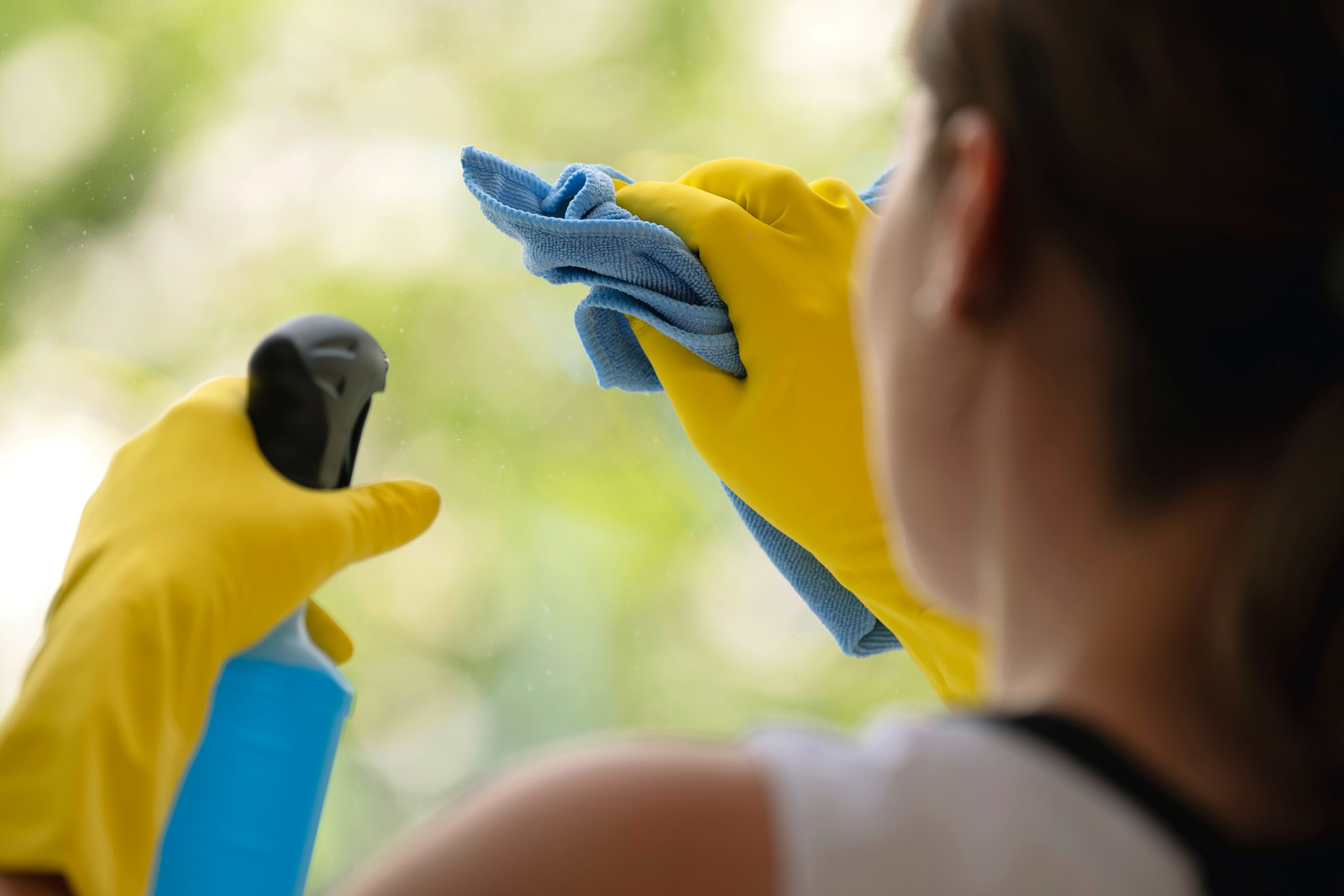

It all comes down to the right technique
Clean windows like the professionals – even when at home. Because, when cleaning windows, above all, you need the right technique:
- Step 1: Generously apply a cleaning solution of water and detergent or household remedy to the window using a sponge or spray bottle. If there is insufficient moisture, the squeegee cannot glide over the surface correctly.
- Step 2: Use the squeegee to wipe down the liquid in figure of eight movements from the top to the bottom and mop it up with a cloth.
- Step 3: Using a chamois leather, microfibre cloth or tea towel, polish the window pane and remove the last few drips of water, particularly at the edges.
Cleaning window frames correctly
When cleaning the windows, don't forget the frames. After all, they are also exposed to the elements just like the window panes. First, remove coarse dirt with a hand brush or a dry cloth. Then thoroughly clean the frame with a wet cloth or a soft sponge. For very stubborn dirt, you can use a detergent. However, you must pay attention to the material of the frame in this case:
- For wood, there are care agents which protect it from weathering.
- Plastic frames can be cleaned with anti-static cleaners which are specifically designed for plastic.
If you get the chance, at the same time, you can also remove any coarse dirt from the window sill and thoroughly clean it.
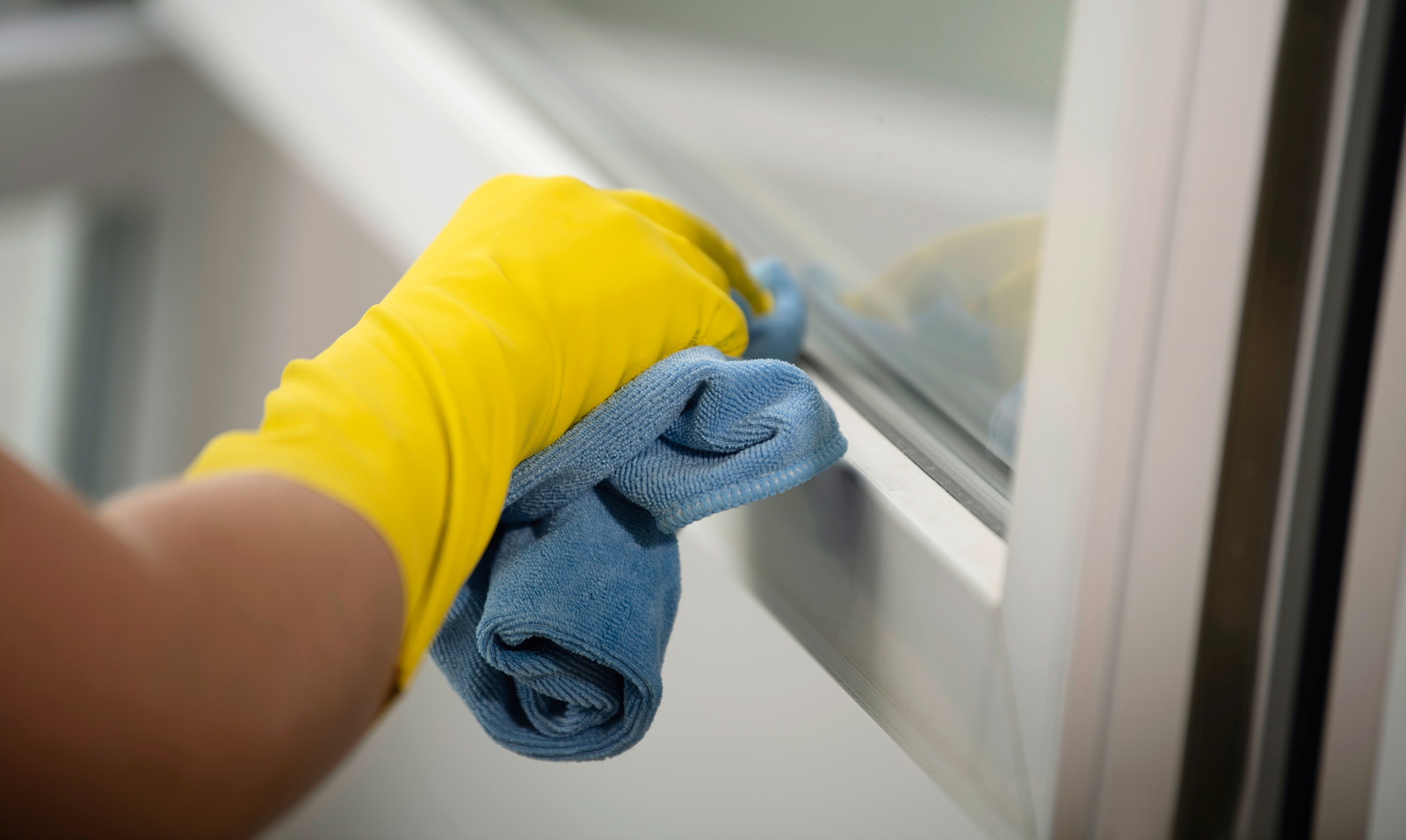
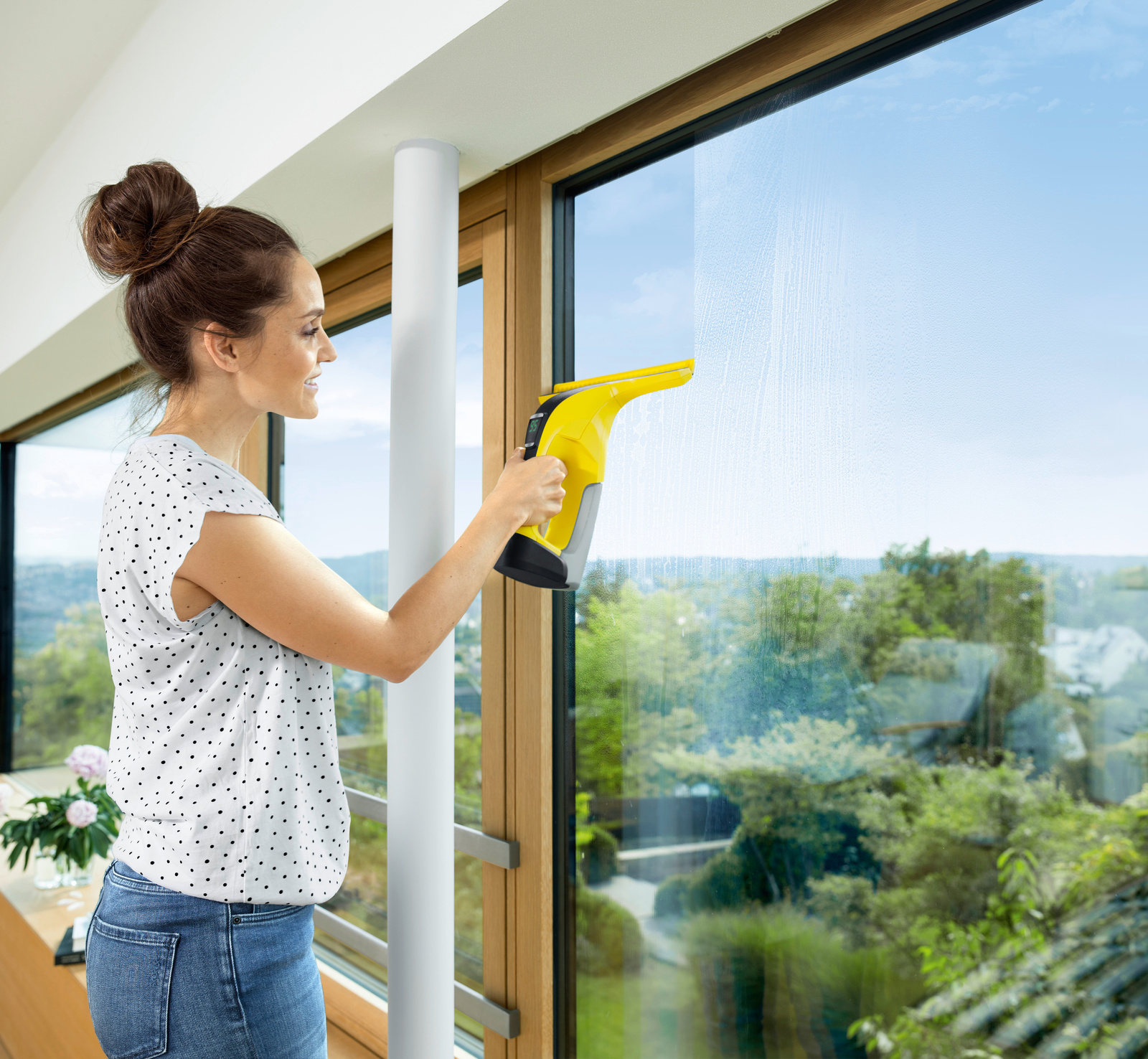
Fast and streak-free with the cordless Window Vac
Using a Window Vac makes it extremely easy to clean your windows:
- Generously spray a mixture of detergent and water onto the glass.
- Remove dirt by rubbing with a microfibre cloth or cleaning pad.
- Use the device to vacuum up the moisture. The dirty water flows directly into the tank – and does not end up on the floor.
After doing this, you end up with streak-free windows. If you can still see streaks on the glass, this could be due to the device's squeegee:
- The squeegee on the Window Vac becomes worn after a certain amount of time. As a result,
the surface becomes uneven and this causes streaks to form on the glass surfaces. A little trick: Turn the squeegee once so that both sides can be used. - Another cause for the formation of streaks may be tiny particles of dust and dirt, which accumulate on the squeegee and make it uneven. Before vacuuming the windows, you can pull the squeegee lip over the cleaning pad on the spray bottle in order to remove these particles and guarantee that the surface of the lip is as smooth as possible.
The procedure with a cordless Window Vac is always the same, regardless of where you are using it. The fields of application are extremely varied:
- Windows/lattice windows
- Mirrors
- Shower cabins
- Glass tables
- Tiles
- Conservatories
- Glass doors
- Other smooth surfaces
Tip 3: Cordless wiper
A cordless wiper is a practical enhancement to the Window Vac. With the vibrating pad, you can effortlessly clean all smooth surfaces. Thanks to the automatic moistening of the wiping cloth, surrounding surfaces are kept dry from the spray mist, hands and the floor remain dry. Time is also saved as no spraying is required. Furthermore, the vibration also aids the cleaning, meaning that the surfaces can be effortlessly cleaned without the hassle of scrubbing.

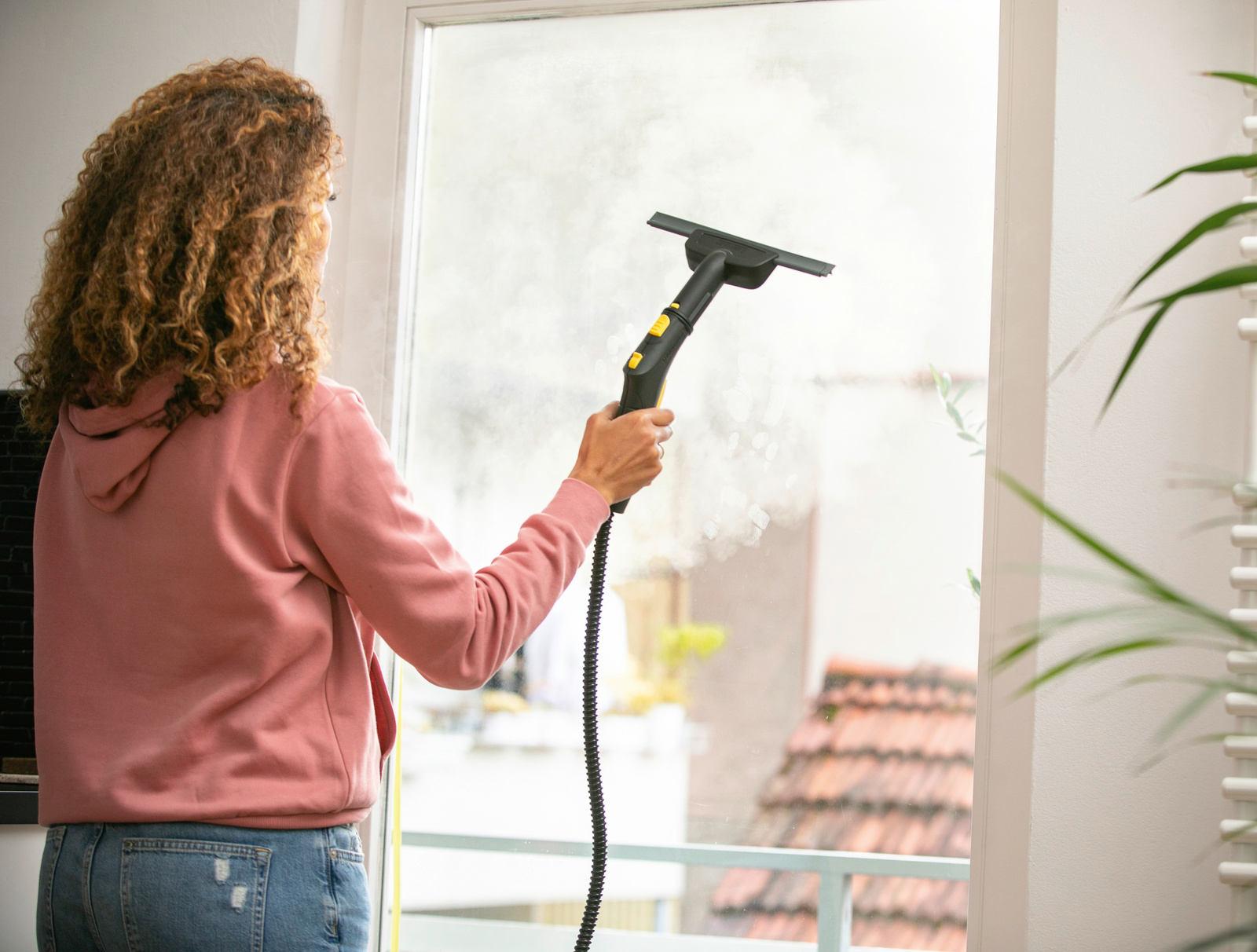
Cleaning windows with the steam cleaner
If you have a steam cleaner at home, you can not only use it to clean mirrors and glass surfaces – you can also use it to clean your windows:
- Step 1: Steam the pane with the hand nozzle and the microfibre cleaning cloth, and loosen the dirt by rubbing. Alternatively, you can also steam the dirty window pane with just the detail nozzle or an optional window nozzle. The steam can also be used to loosen stubborn marks.
- Step 2: You can remove the water residue using a squeegee or a Window Vac. You can also use a soft cloth to dry edges and window frames.
The water that escapes as steam from the steam cleaner, is demineralised and therefore acts like distilled water. This means that it does not leave any stripes or streaks on the glass. However, if stripes or streaks unexpectedly occur after cleaning, this is usually because detergent residue has not been removed. In this case: Be patient and wipe over the pane a few more times until all of the residue is removed.
The complete package: Curtains and blinds
If you want to give your windows a thorough clean, you not only clean the frames and window panes, but you also give the curtains a good wash and dust the inside of the blinds.
- After tumble-drying the curtains, hang them straight back on the rail – this means that you will not have to iron them, depending on the material.
- Remove all dust from the blinds with a damp cloth. Cleaning them with a silicone dough scraper wrapped in a microfibre cloth is also highly effective.
- A practical alternative for cleaning blinds is also a steam cleaner, which can be used to easily remove dust and dirt from the slats and gaps.


